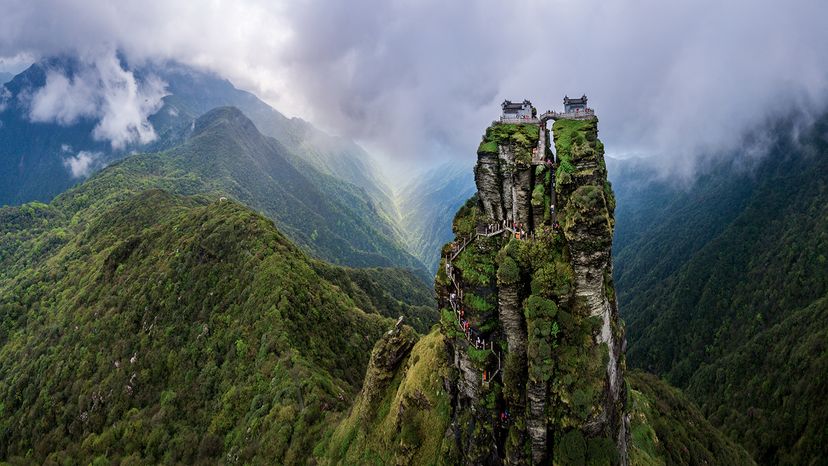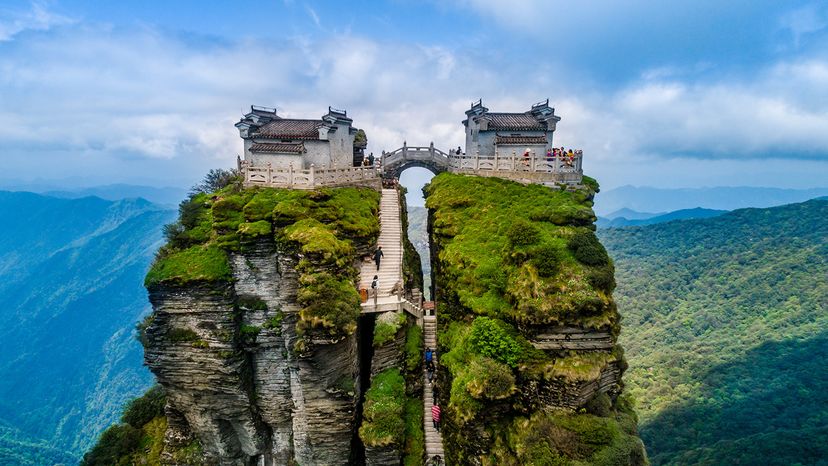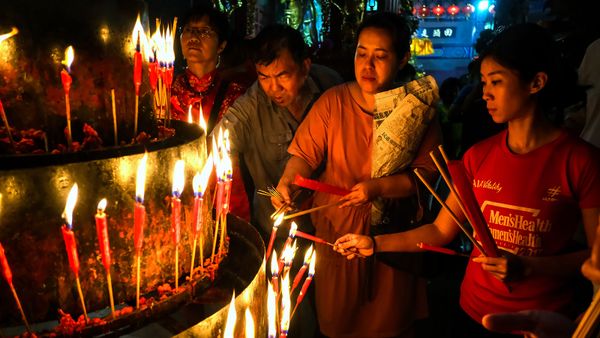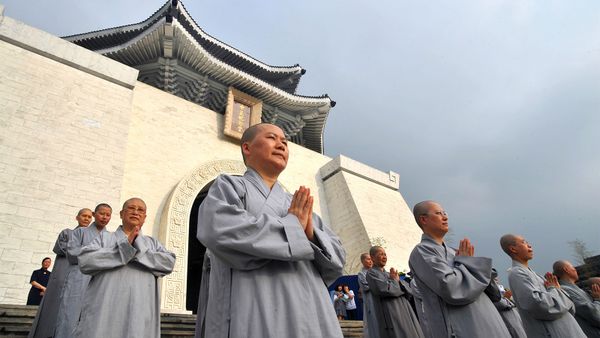
The current tallest building and tallest human-made structure in the world, the Burj Khalifa in Dubai, UAE, reaches an astonishing 2,716 feet (828 meters). That is certainly impressive, but a centuries-old Buddhist temple pair on a mountain summit in Southeastern China offer an even more spectacular view, albeit without elevator access.
Located on the Fanjing Mountain in Tongren City, Guizhou Province, Fanjingshan Temple — actually two temples, the Temple of the Buddha and Maitreya Temple — sits impossibly atop a spindly rock formation called Red Clouds Golden Summit whose narrow form ascends 330 feet (100 meters) from the already high mountain. That's about the height of the ancient Lighthouse of Alexandria or the Elizabeth Tower (Big Ben). Brave visitors can hike to the top to be "surrounded by mists and sea of clouds," according to China Discovery, and take in additional beautiful natural and architectural sites along the way.
Advertisement



